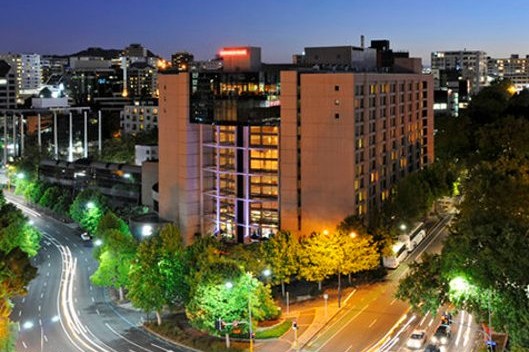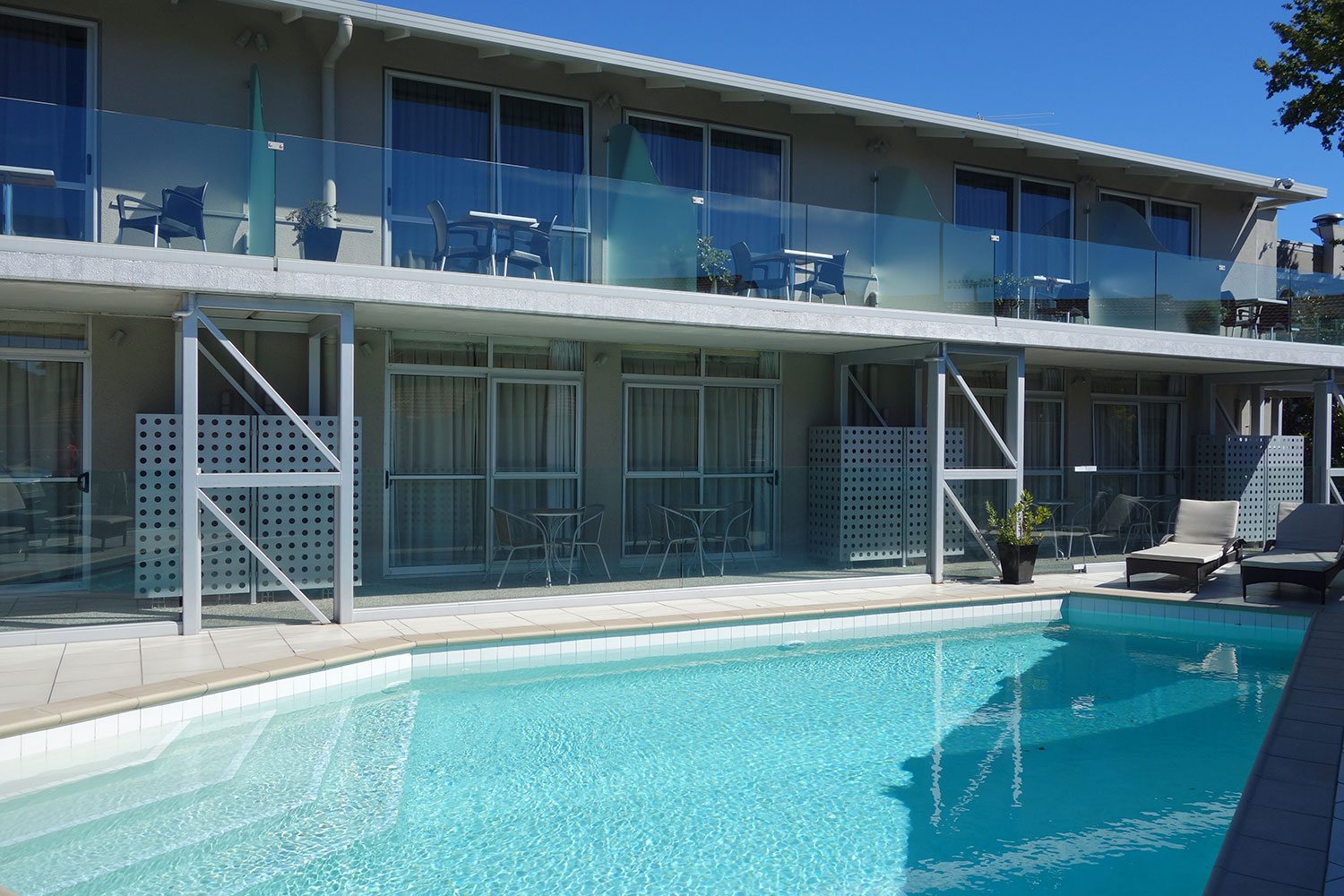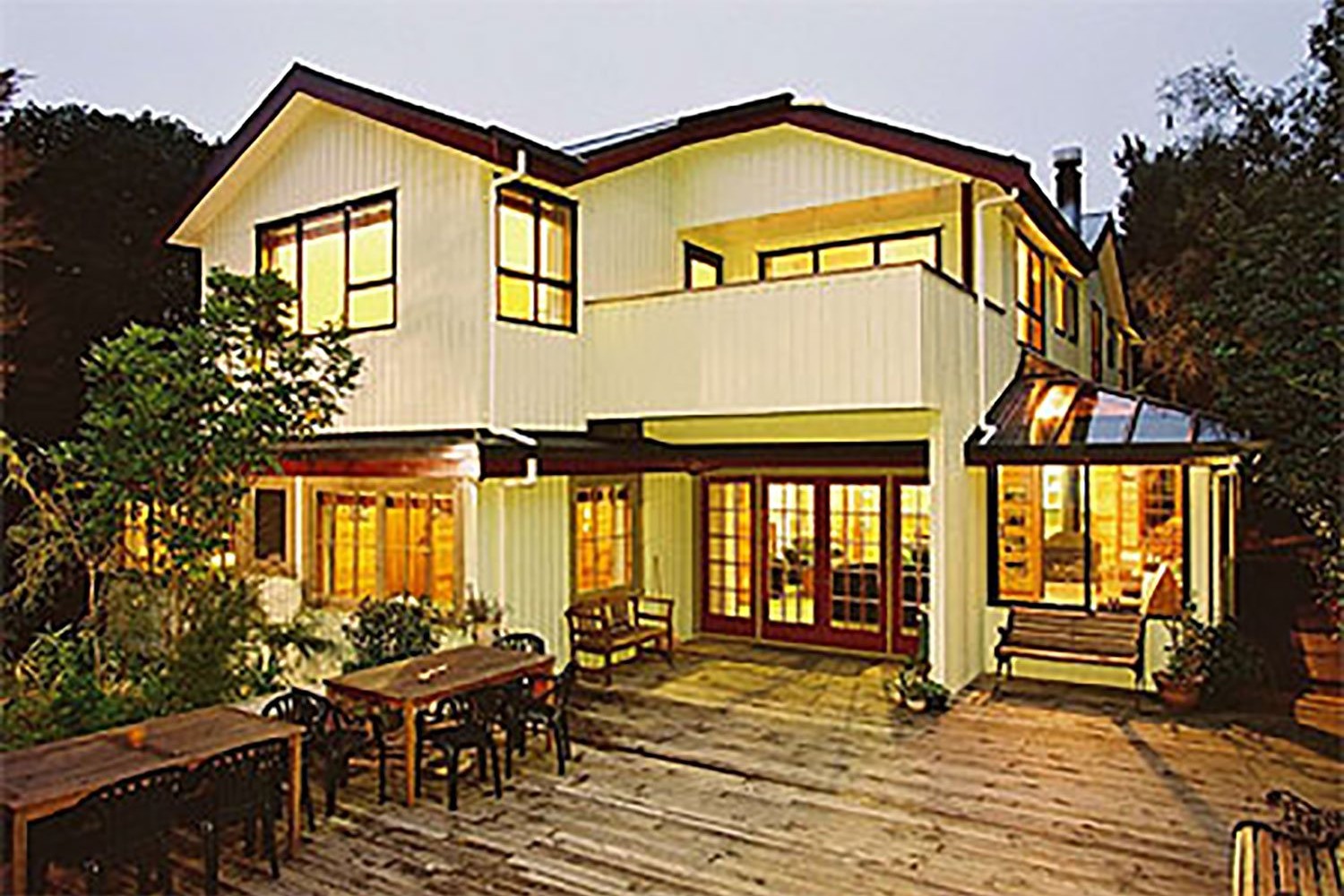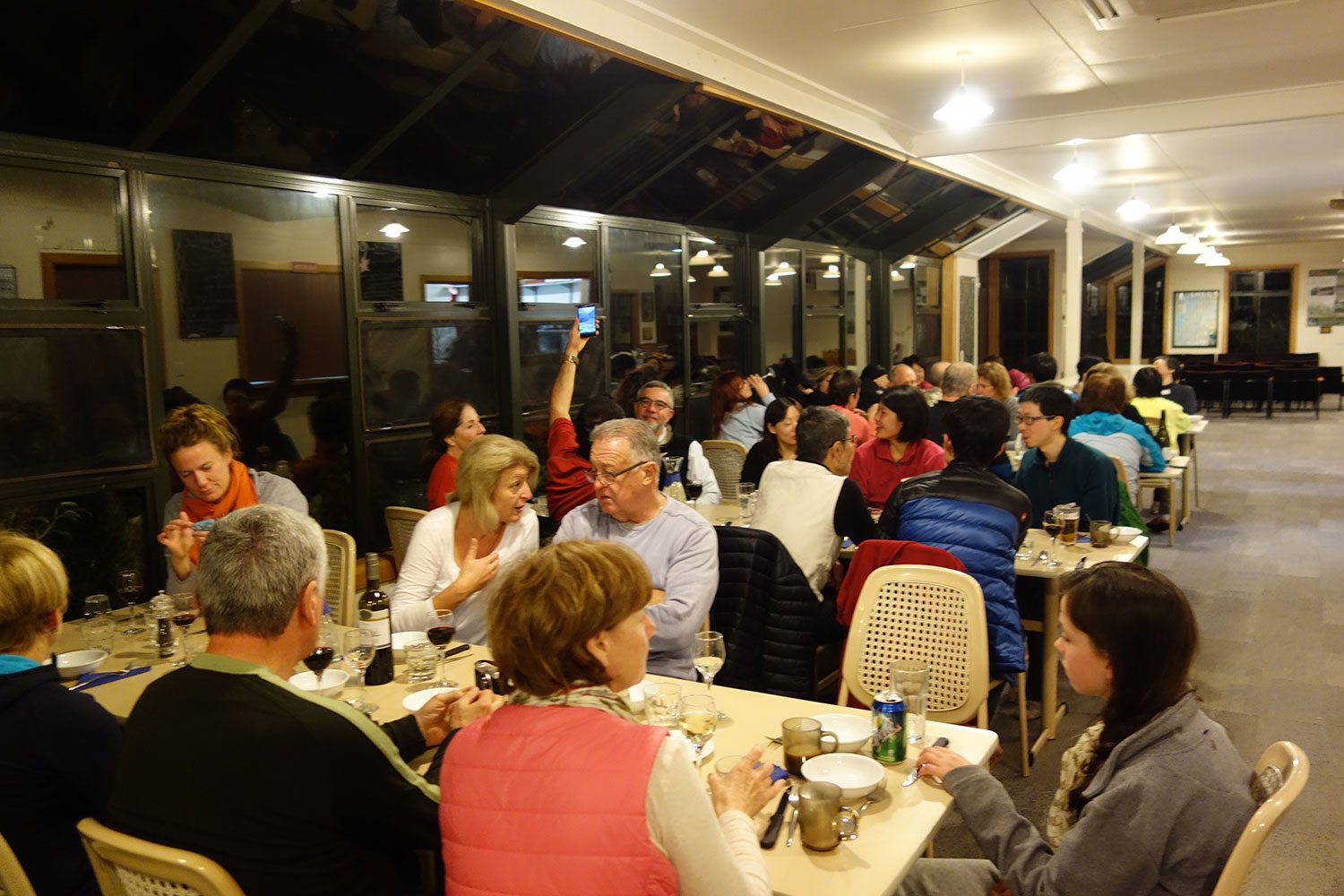Milford Track And Abel Tasman Coastal Path – From £3,995
18 Days | Grade: Moderate | Departures November – April
Day 1 & 2 Auckland
Arrive and be met by your Silver Fern representative at Auckland airport before your private transfer to your hotel. Explore the City of Sails, visit the Botanic Gardens, cruise the harbour and Hauraki Maritime Gulf.
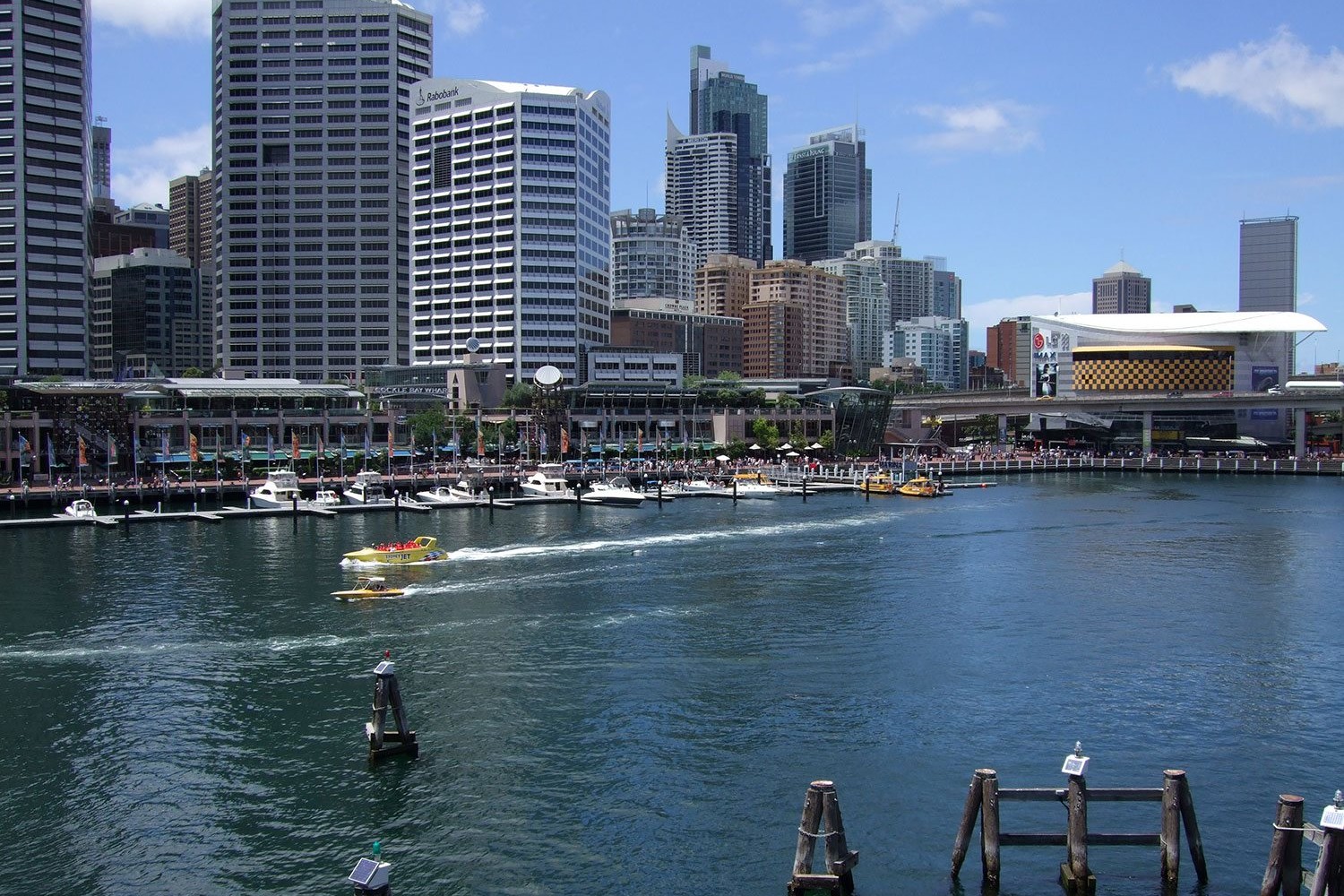
Day 3 Fly to Nelson
Transfer to Auckland’s domestic airport for a short flight to Nelson on the north coast of the South Island. Nelson is the South Island’s sunshine capital, and a vibrant arts, crafts and festivals area.
Prepare for the commencement of your track walk tomorrow. Your overnight luggage will be transported to each lodge by boat . Any items not required for the track walk can be stored at the Trailways Inn for your return. You will only require a light day pack – 30 litre capacity – in which you can carry your lunch and personal requirements for the day (this will be supplied by the Track Operators, if required.)
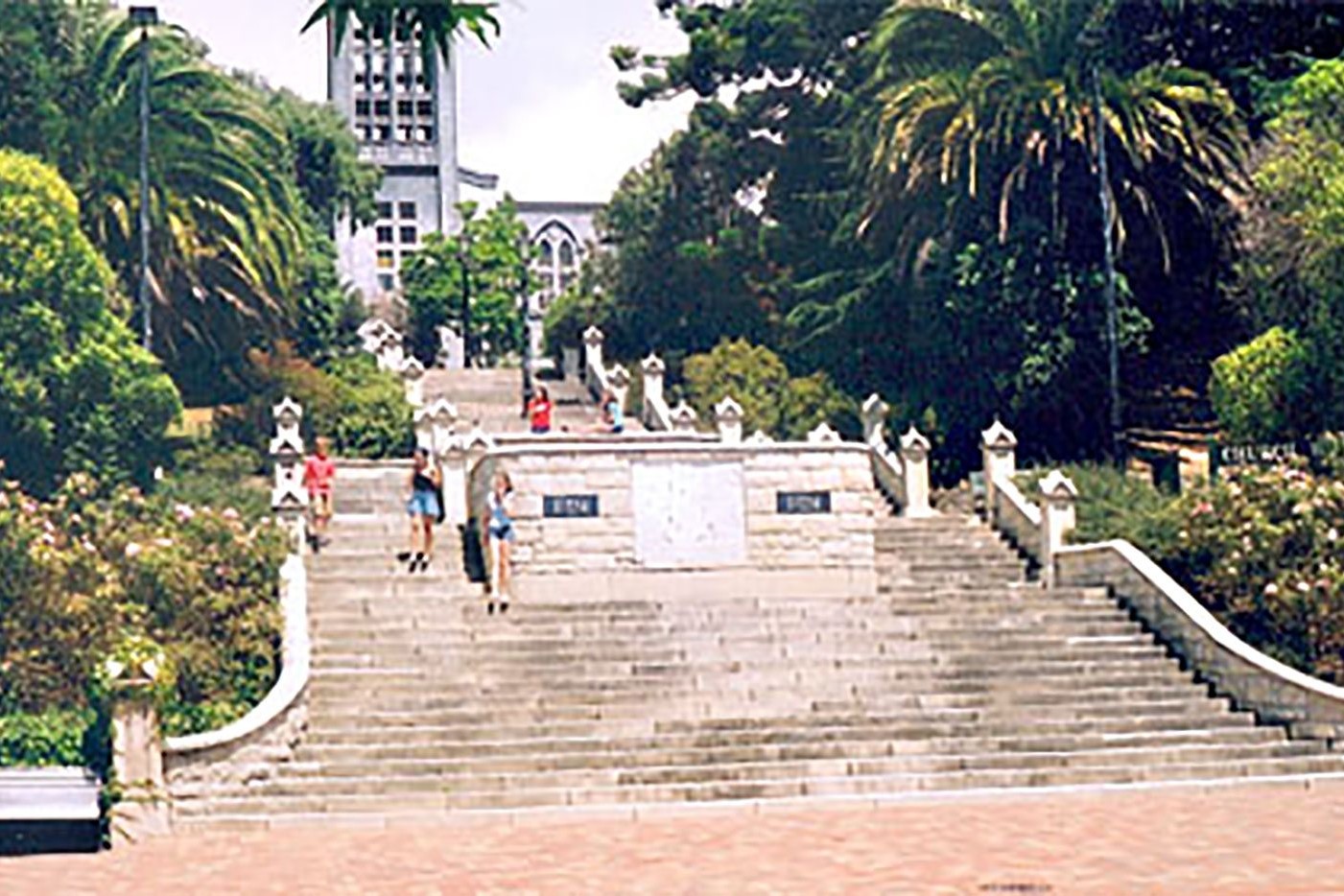
Day 4 Abel Tasman Coastal Path
After an early breakfast , drive with your guide to Marahau to commence your walk on the coastal path. This is an easy first day on the track which weaves in and out of the picturesque coastline. The area consists of many little bays in which French explorer Du Mont D’Urville spent time exploring in 1827. Most of the names in this area relate to this expedition. An hour or so is spent at lunchtime enjoying one of these bays before continuing to the Beachfront Lodge at Torrent Bay for your overnight.
Marahau to Torrent Bay: 8 miles / 13 km (229 ft / 70m ascent)
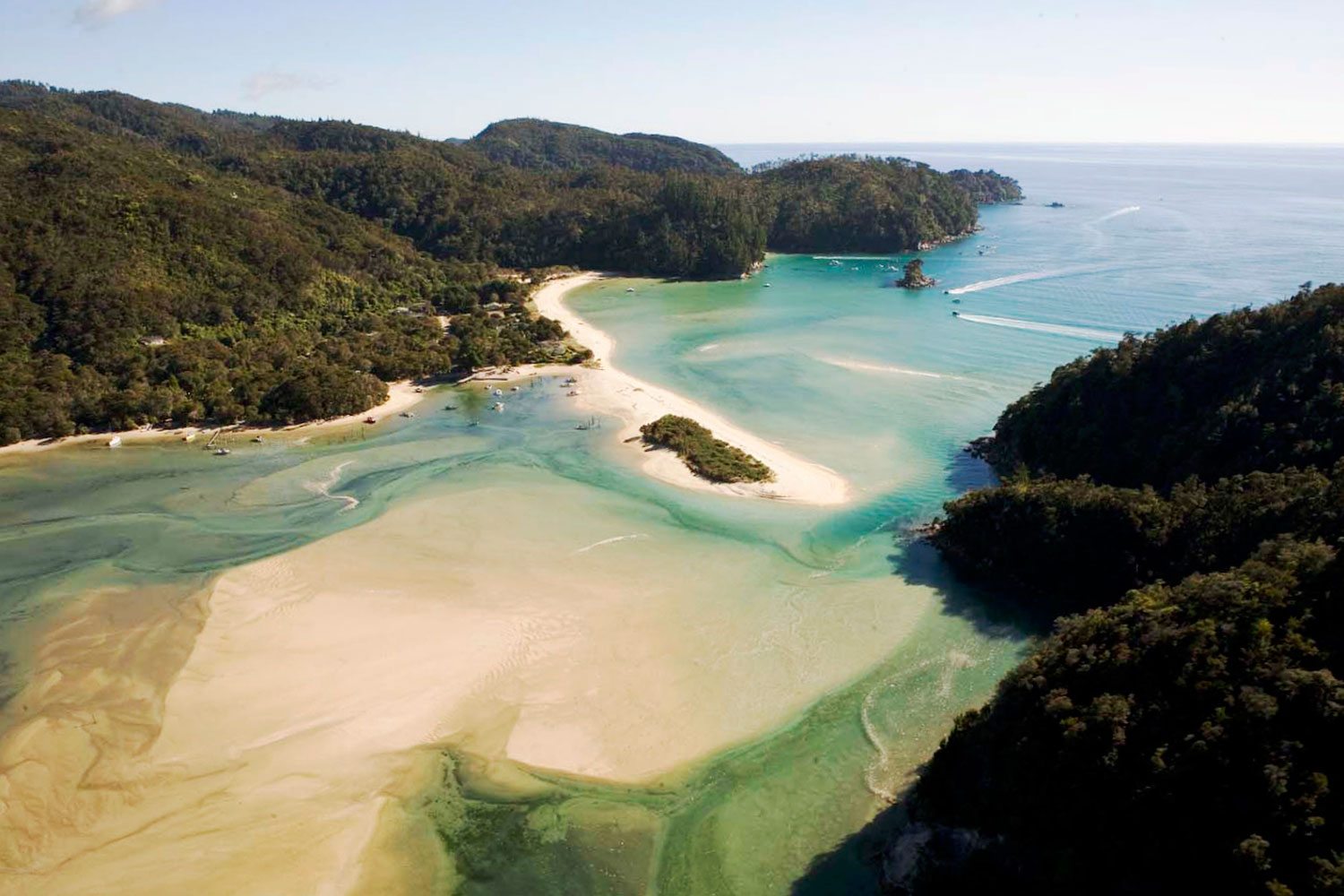
Day 5 Abel Tasman Coastal Path
Leave Torrent Bay to follow the track through pine trees. The track winds around two attractive valleys and above a beautiful inlet to the Park’s biggest river, the Falls. Continue to Bark Bay for lunch with time to relax, explore or swim in the crystal clear lagoon or sunbathe on the golden sands. From Bark Bay cross the all-tides track around the estuary and climb to a saddle. Here you lose all sense of the sea below and journey quietly through strands of manuka. The trail then returns to the shore at Tonga Quarry, where blocks of granite remain from an old quarrying operation. Tonga Island sits offshore surrounded by marine reserve. A short distance on is Onetahuti Beach and your accommodation at the Meadowland homestead.
Torrent Bay to Awaroa: 10.5 miles / 17 km (492 ft / 150m ascent)
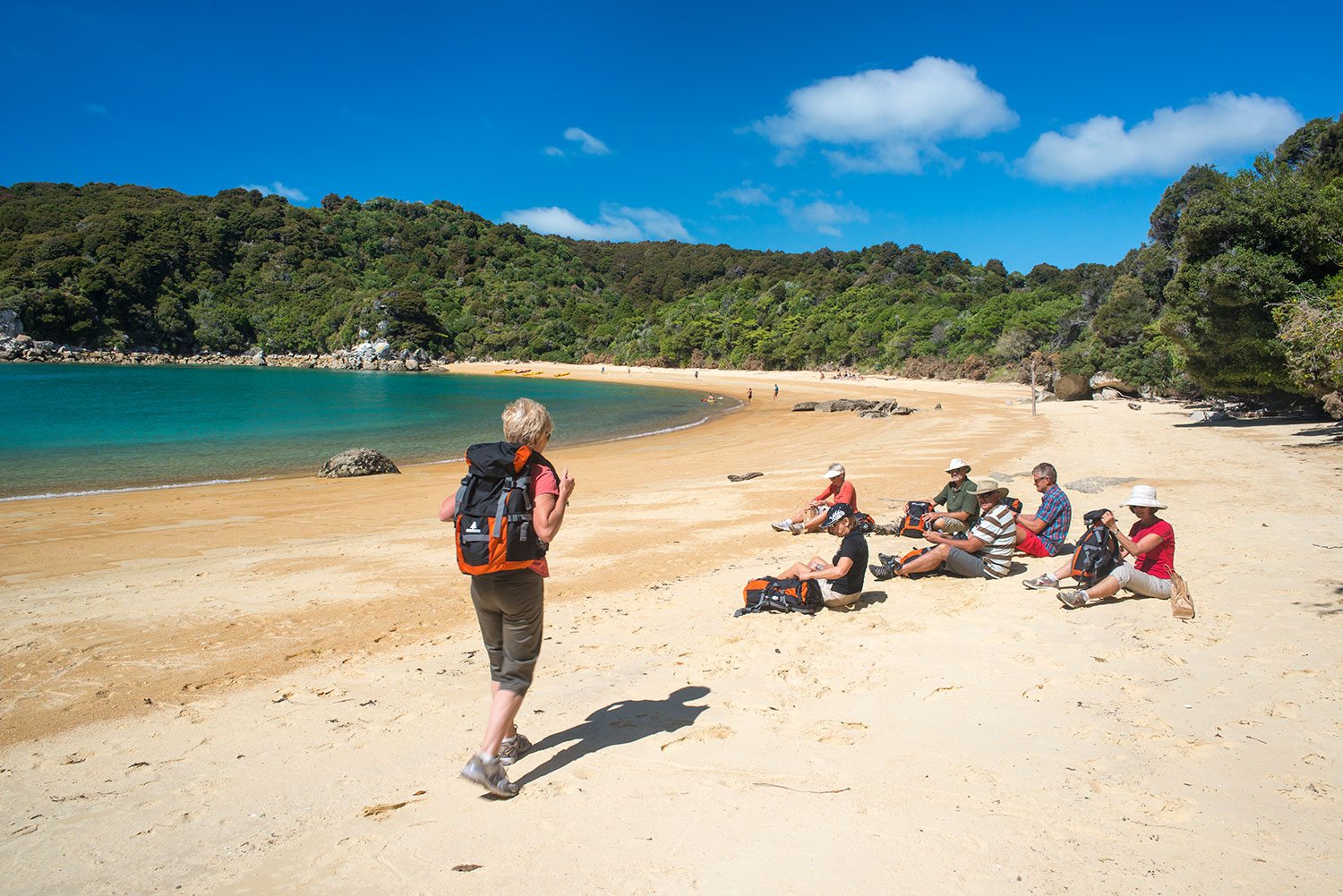
Day 6 Abel Tasman Coastal Path
Your final day on the coastal path takes you across the Awaroa Estuary before re-entering the forest to emerge at Goat Bay. Climb to a lookout above Skinner Point and descend to the beach at Totaranui. At Totaranui, board the boat launch for a cruise along the coastline to Kaiteriteri where our coach will meet you for the short transfer to Nelson.
Awaroa to Totranui: 4.5 miles / 7km (328 ft / 100m ascent)
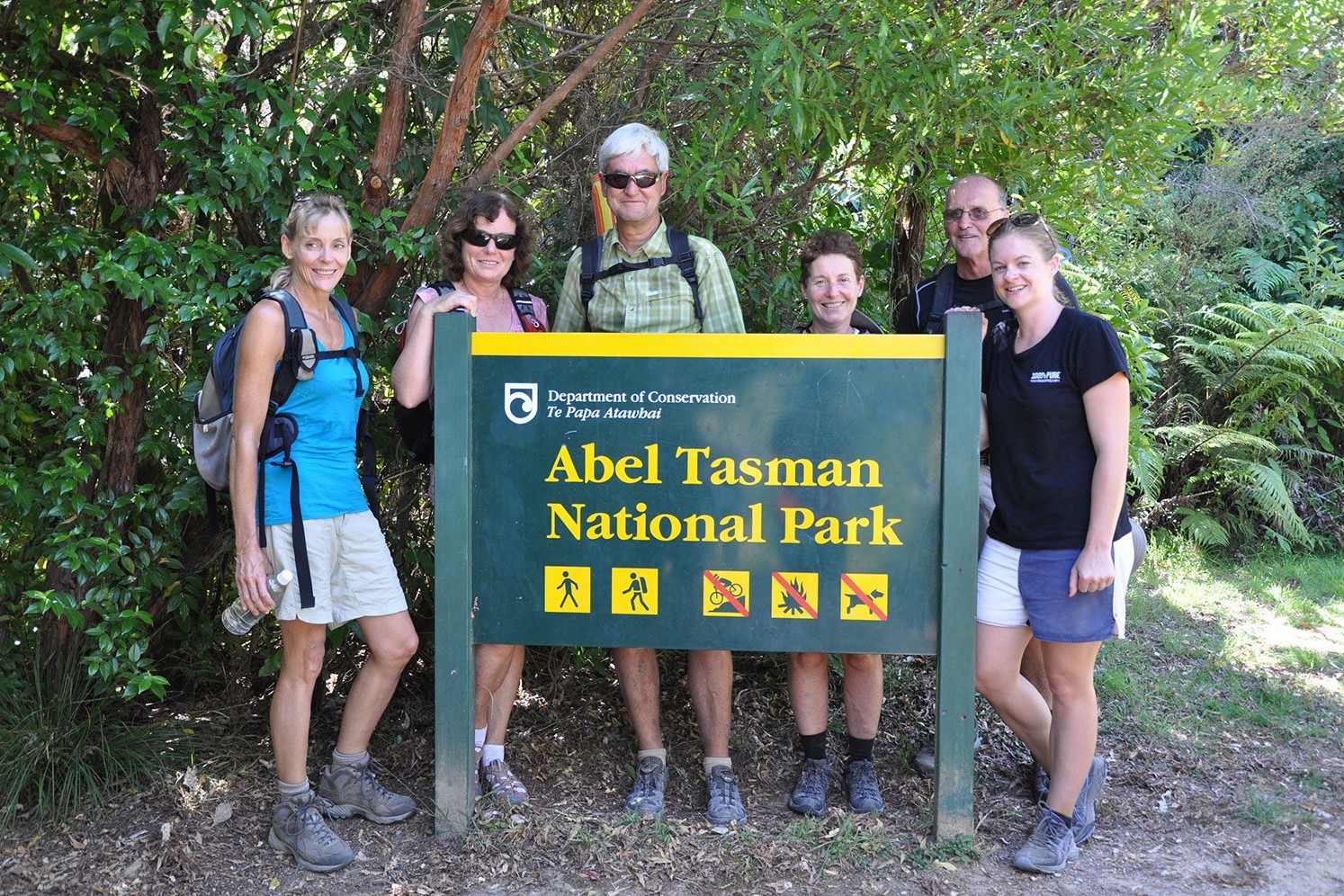
Day 7 Fly to Queenstown
Today is at leisure for you to enjoy the scenic setting of Queenstown, situated on the shores of Lake Wakatipu. In recent years it’s gained a reputation as the ‘Adventure Centre of New Zealand’ so there’s a wide range of adrenalin activities for you to engage in from bungee jumping, jet boat riding, parapenting and white water rafting. Alternatively you might like to take a boat cruise on the steamer TSS Earnslaw to Walter Peak sheep station or simply enjoy short walks through the town’s attractive gardens and along the foreshore.
In preparation for the Milford Track walk you’ll need to divide your luggage into that required whilst on the track (see recommended list), clothing that you may need for use at Milford Sound (Mitre Peak Lodge) and that which can await your return to the hotel in Queenstown.
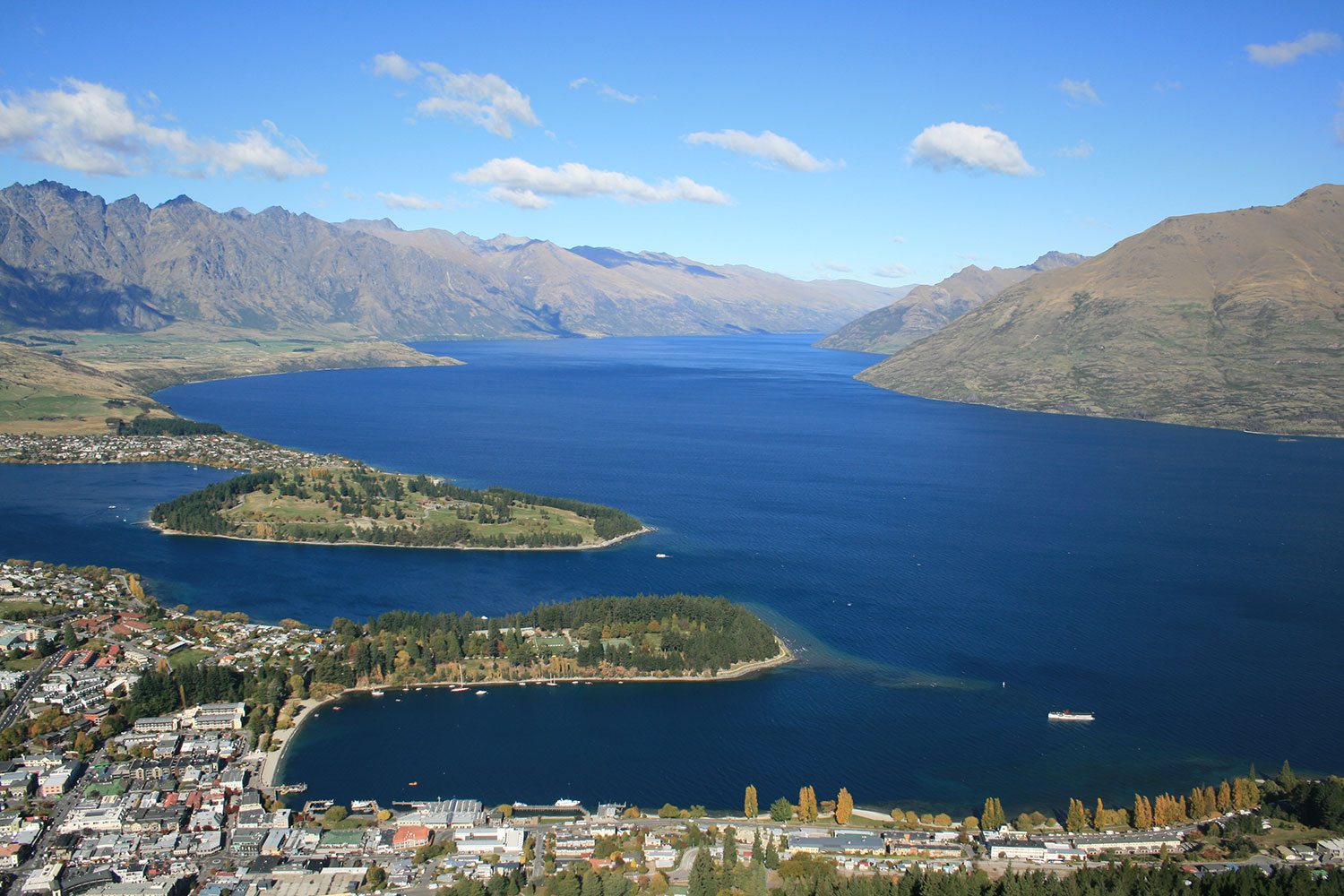
Day 8 Milford Track
Board the coach for the scenic drive past the Remarkable Mountains and the small township of Kingston to Te Anau where you’ll join up with other walkers commencing the trip from there. Enjoy lunch together before your launch cruise to the head of Lake Te Anau, the beginning of the track. From the wharf it’s a short walk to the historic Glade House, where you will be greeted with afternoon tea. Afterwards your guides will take you on a short nature walk to explore the surrounding area.
Afternoon walk to Glade House: 1 mile / 1.6 km ( level walking)
Glade House
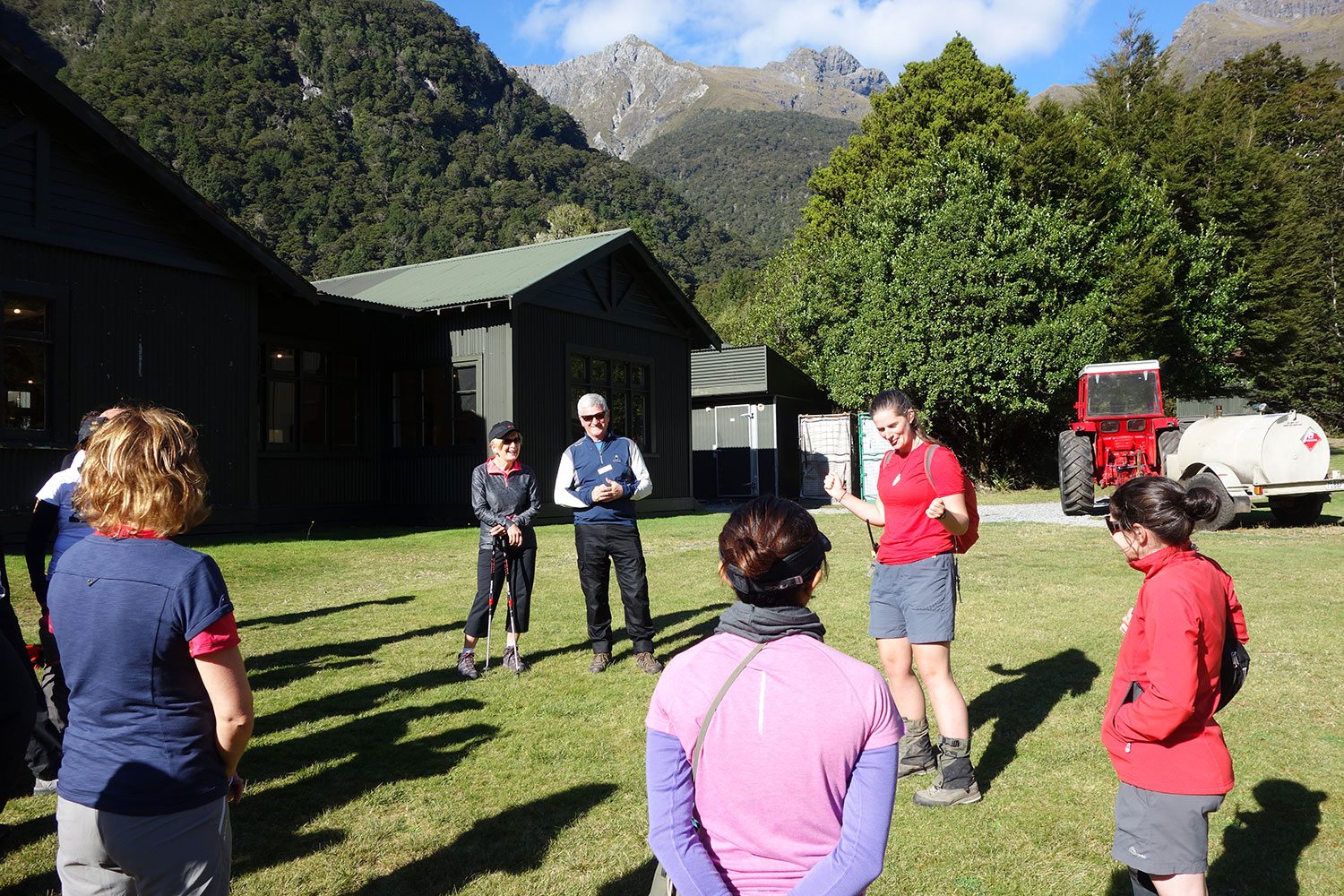
Day 9 Milford Track
Wake to the dawn chorus of native birds – bellbird, tui, native pigeon, fantail, falcon, morepork and the inquisitive kea. Cross the Clinton River and walk through the beech forest for lunch at Hirere Falls. Continue onto a grassy plain known as the Prairie to gain spectacular views of Clinton Canyon. A rocky climb takes you to Marlene’s Creek after which you’ll arrive at Pompolona Lodge.
Glade House to Pomplona Lodge: 10 miles / 16 km ( 492 ft / 150m ascent)
Pomplona Lodge
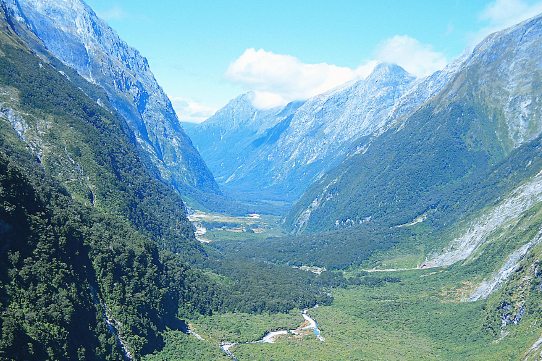
Day 10 Milford Track
This is the most demanding day, especially in inclement weather. We’re still in the upper reaches of the ClintonRiver with the St. Quintin Falls visible on the side of the Canyon. Pass Mirror Lake and Avalanche Creek before the slow climb to the Mackinnon Pass in a series of long zigzags, resting whenever you wish to enjoy the impressive views. Stop at the memorial to Mackinnon and Ernest Mitchell, early explorers of the area – edge to the ’12 second drop’ for a view of Quintin Lodge. After lunch at Pass Hut we continue around the base of Mount Balloon under the sheer face of the Jervois Glacier and across Roaring Burn and Moraine Creek. We then pass through the rainforest of Arthur Valley to the Quintin Lodge. It’s well worth an extra walk to the Sutherland Falls, the highest falls in the Southern Hemisphere, a 90 minute round trip.
Pompolona Lodge to Quintin Lodge: 9 miles / 15 km (2460 ft / 750m ascent; 2624 ft / 800m descent)
Quinton Lodge

Day 11 Milford Track
This is the last day on the track – easy walking down a steep hill named Gentle Annie through Lady of the Snows, Dumpling Hill, Sandy Flat and Racecourse Flat. There’s morning tea beside the Bell Rock and Mackay Falls before continuing to the Giant’s Gate Waterfall for lunch. The final stretch of the track follows tranquil Lake Ada to Sandfly Point on Milford Sound. From here it’s a short boat trip to Mitre Peak Lodge for evening ‘post-track’ celebrations.
Quintin Lodge to Mitre Peak: 13 miles / 21 km (492 ft / 150m ascent; 164 ft / 50m descent)
Mitre Peak Lodge
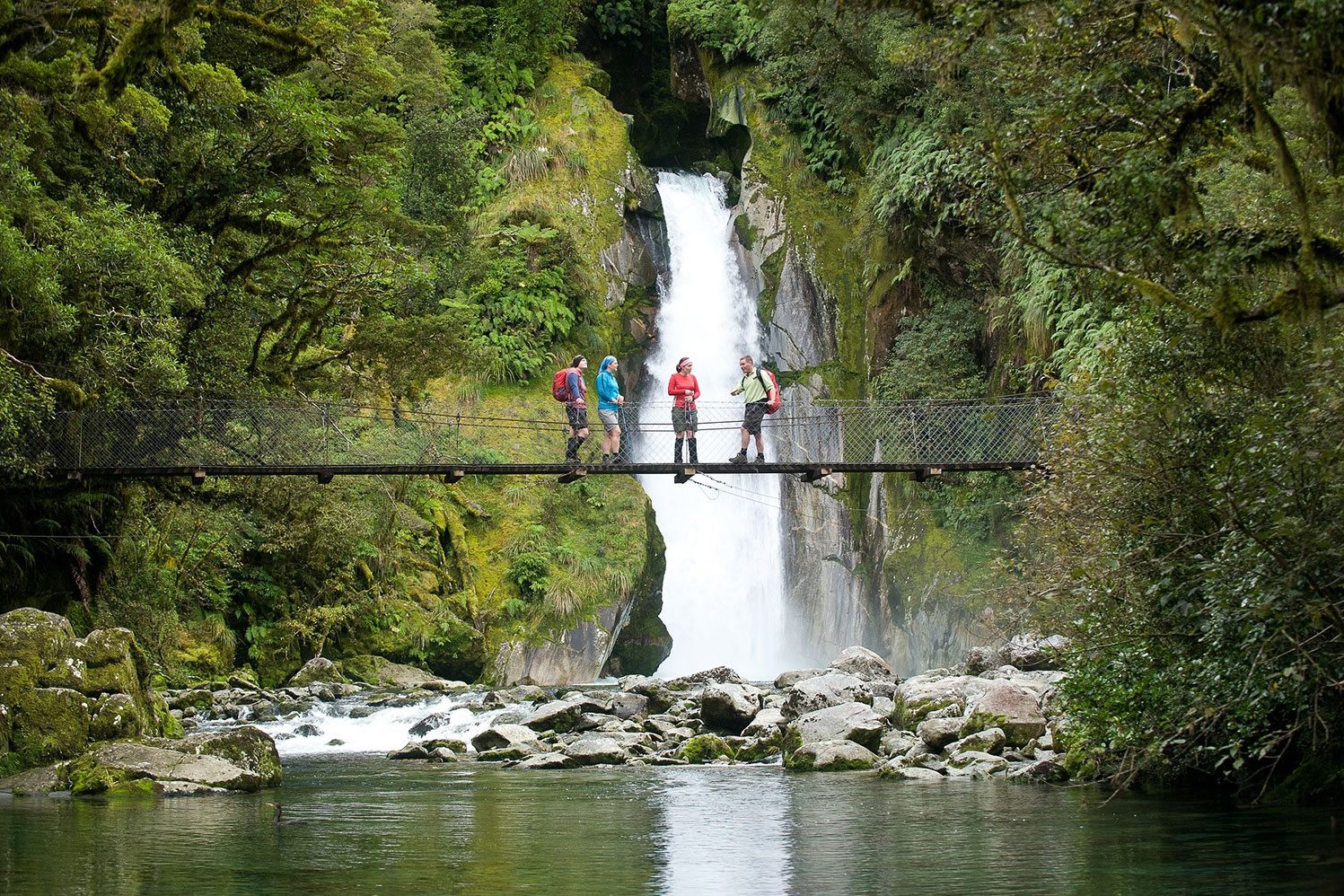
Day 12 Milford Sound To Queenstown
Relax this morning on the Milford Sound cruise past Lady Bowen Falls, beneath Mitre Peak, Copper and Dale Points to the Tasman Sea. There is a good chance of seeing dolphins and seals during the trip. Following the cruise head back to Queenstown through the heart of Fiordland National Park. In the evening take the gondola lift to the Skyline Restaurant for an evening meal high above the town. With spectacular views of the Remarkable Mountains and Lake Wakatipu, this is the perfect setting for the conclusion to your stay in this area.

Day 13 Queenstown
Time to relax after your Track Walk. Enjoy a final day of sightseeing and leisure activities.

Day 14 Depart New Zealand
Flight schedules permitting there may be time this morning for some last minute souvenir shopping before transferring to Queenstown Airport for flight home.

Although New Zealand is one of the easiest countries to travel to, we realise that contemplating a long haul trip to the other side of the world can be daunting, so we’ve put together some essential information that you will need to know before you head off on your holiday.
We hope we’ve covered everything, but do give us a call if you have any other questions or queries or are unsure about any details.
The Geography
New Zealand is made up of two Islands, The North Island and The South Island. The majority of the population live on the North Island.
The country has an incredibly varied landscape. You’ll find wide, sweeping coastlines, spectacular mountain ranges, tropical rainforest, steaming volcanoes and stunning glacier regions. It truly has something for everyone, whether you’re seeking peace, quiet and relaxation, or the thrill and adrenaline rush of all the adventure it offers.
New Zealand also has 14 National Parks that showcase more than 30,000 square kilometres of wonderful nature and breathtaking scenery.
Time Difference
New Zealand is 12 hours ahead of GMT (Greenwich Mean Time), making it one of the first countries in the world to welcome in each new day.
Like us here in the UK, New Zealand observes Daylight Saving, and so during their summer time (and our winter time) their clocks go forward one hour to GMT+13. Daylight saving begins on the last Sunday in September and ends on the first Sunday of the following April, when clocks are put back to GMT+12.
The Seasons
Being in the Southern Hemisphere, New Zealand's seasons are the opposite way around to ours, so December to February are their hottest months, and also the most expensive time to visit. June to September is the peak season for skiing in the ski resorts of Wanaka, Queenstown and Canterbury on the South Island, and the in between or ‘shoulder seasons’ often offer the best of both worlds, with better prices, more accommodation options and less tourists while still enjoying bright sunny days and warm weather.
Health and Insurance
We realise how difficult can be for our older travellers to find travel Insurance at a reasonable cost, and after a lot of research, are confident that our current partner Holiday Extras offer the best value for money insurance policies.
You don’t need any vaccinations to travel to New Zealand, and you will find doctors and health centres in every large town and city. Calling 111 will contact the emergency services from anywhere in the country.
It’s perfectly safe to drink the tap water in New Zealand, so there is no need to worry about needing to purchase bottled water when you are there.
Airport Hotels, Parking & Lounge Passes
Depending on the time of your flight you may wish to avoid an early morning start by checking into an Airport hotel. With our partner, Holiday Extras, we are able to offer a range of hotel options and parking arrangements. There are also a number of airport lounges you can book if there is considerable waiting time between your flights. These lounges offer a range of facilities from refreshments and drinks to showers and comfortable seating areas in a quiet environment.
Book your Hotel, Parking or Lounge Access
Car Insurance
Car hire companies often charge an excess for damage caused to the car whilst you're behind the wheel even if it's not your fault. This can be upwards of £1000 meaning if you're involved in an accident, you'll have to pay a contribution to cover the damage
To reduce this amount they offer what is called an Excess Insurance or Damage Waiver, typically around $25-$30.00 per day. If you’re following a two or three week itinerary, this can add up to around $600.00
However you can purchase an annual excess car hire insurance in the UK for a lot less.
Our suggestion is to contact an insurance company such as insurance4carhire.com, With them you're able to reclaim the excess you’d have to pay in the unfortunate event of an accident or your car being stolen. You may also get more cover compared with waiving the excess at the car hire desk.
Visa Requirements
From 1 October 2019 you will need a Visa to travel to New Zealand as a British citizen or British Passport Holder. We are still awaiting final details from the New Zealand Immigration Department regarding this requirement.
All Silver Fern travellers will be advised by our office as to the nature of this process, prior to their travel to New Zealand.
For Silver Fern travellers contemplating stopovers en route to New Zealand or integrating a New Zealand holiday with a longer worldwide tour, a visa may be required.
For example an Australian tourist visa is necessary for anyone entering the country other than those in transit. Similarly entrants to America should have arranged an ESTA. These can be applied for online or through the Travel Visa Company, one of our trade partners who charge for this service.
Visit Travel Visa Company website
Currency and Credit Cards
The currency in New Zealand is the NZ Dollar. The exchange rate varies but as a general guide, there is NZ$2 / NZ$2.20 to every GBP£1.
You can use all major credit cards in New Zealand, and ATM’s are found as easily as they are in the UK, on most high streets, in shopping malls and in banks. You can also exchange foreign currency at banks, some hotels and bureau de change kiosks.
Do let your bank know you’ll be travelling before you leave home though to ensure that you’re able to use your card overseas.
What to pack
Holiday packing is always a challenge, especially when you’re going away for longer than a week or two, so we wrote a blog post offering our advice on how to pack for your New Zealand holiday – you can read it here. Remember to pack a good pair of sturdy walking boots if you’re planning to get out and explore some of the country on foot, and we recommend lightweight layers that you can add/remove depending on the weather.
Electronics and mobile devices
You can buy a prepaid Vodafone sim card at the airport or many of the local shop to put in your phone but its always worth checking with your mobile phone provider to see if they offer an overseas package before you leave home.
New Zealand electricity supply runs at 230/240 volts, and they use the same plug as in Australia, with two or three pins. You’ll need to use an adapter for all appliances, which can easily be purchased either in the UK before you travel or once you’re in New Zealand.
Wi-fi is widely available in most hotels and B&B’s and also in many cafes and eateries.
As far as possible we have endeavoured to make this information as accurate as possible, but we always recommend that you do make sure to double check things like Visa’s / Insurance etc before travel as changes do occur.

